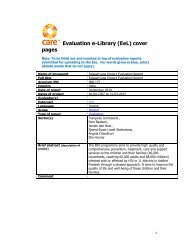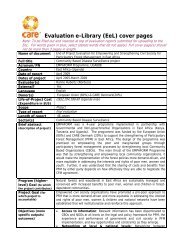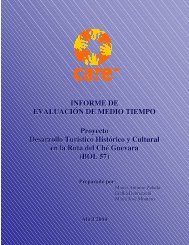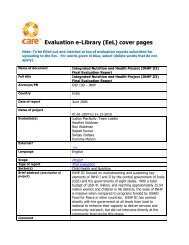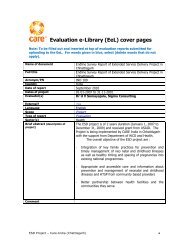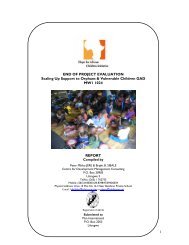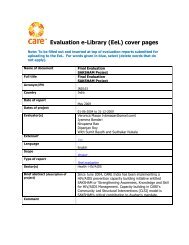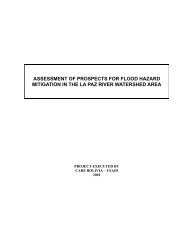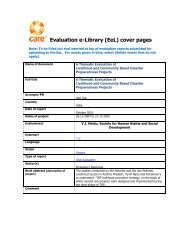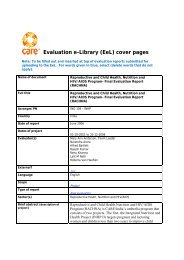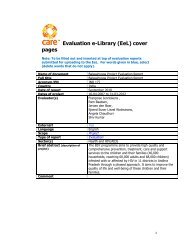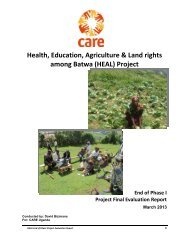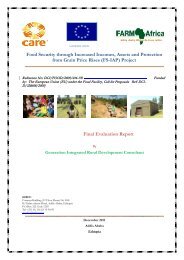IND 199 ECDE Baseline - CARE International's Electronic ...
IND 199 ECDE Baseline - CARE International's Electronic ...
IND 199 ECDE Baseline - CARE International's Electronic ...
- No tags were found...
Create successful ePaper yourself
Turn your PDF publications into a flip-book with our unique Google optimized e-Paper software.
lxxxvTable 8.16: Distribution of AWWs by ways to spread awareness in communityabout different health issues(Percentage)Ways to spread awareness in Intervention districts / Category Controlcommunity about health issuesof AWCsIntervention Intermediate Raigarh(n=) 61 59 61Counsel Parents/ families/communities 55.7 40.7 67.2Use of Traditional and folk media 18 8.5 27.9Organize awareness campaign 14.8 22 47.5Organize street plays/nukkad nataks 4.9 6.8 24.6House to house visit 93.4 100 90.2Prepare communication and educationmaterial 6.6 8.5 11.58.5.2 Functioning of AWWsThe AWWs were asked various aspects of functioning of the AWCs. Their answers arereported in Table 8.6A in Annexure -2. Major findings are:• Almost all the AWCs open 5-6 days a week. They work for about 17-18 hours a week—about three hours every day.• Ration is provided on weekly basis• They take help of Sahayika for bringing (from home) and taking care of children• Almost all the AWWs reported to be making home visits—mean number of home visitsreported was 11-13 every month; every visit was of about 20-25 minutes. These visitswere being used to give awareness of services and counseling on the benefits of theservices (Table 8.7A in Annexure -2).• Almost 50% AWCs in the intervention districts reported to be working with Self HelpGroups (SHGs) in the villages. They talk about savings schemes and the services formothers and children.. Very small percent AWWs reported to be working with any othergroup in the villages.• More than 95% reported organization of Nutrition and Health Day (NHD) every month.Most of the expected activities are carried out there—there is some variation. Moredetails on the NHD can be seen in Table 8.17.Table 8.17: Distribution of AWWs by NHDs being held in their area of work(Percentage)Particulars Intervention districts / ControlCategory of AWCsIntervention Intermediate RaigarhNutrition and health days (NHD) held atAWC (n=) 61 59 61Yes 95.1 96.6 90.2Frequency of organizing NHDs atAWC (n=) 58 57 55Monthly 84.5 96.5 78.2Once in 2-3 months 15.5 3.5 14.5Other frequency 0.0 0.0 7.3<strong>Baseline</strong> Study Of Early Childhood Care And Development Project In ChattisgarhApril,2012



